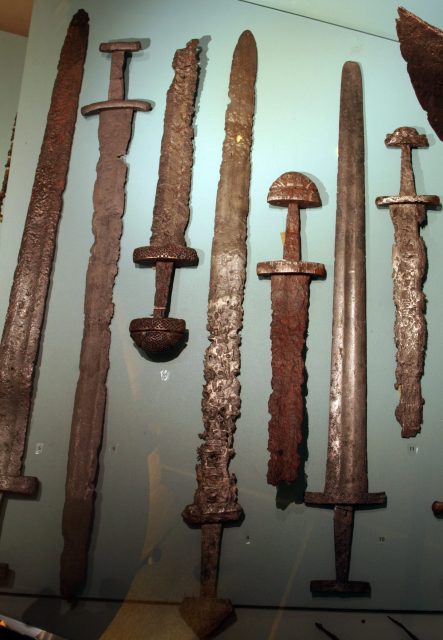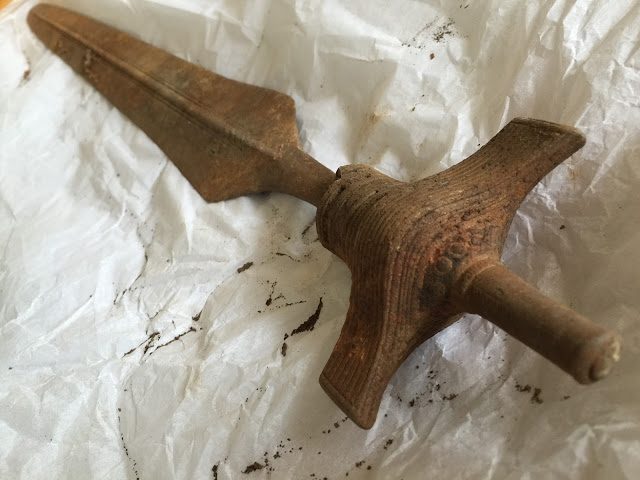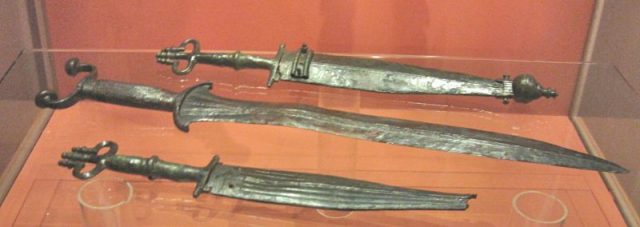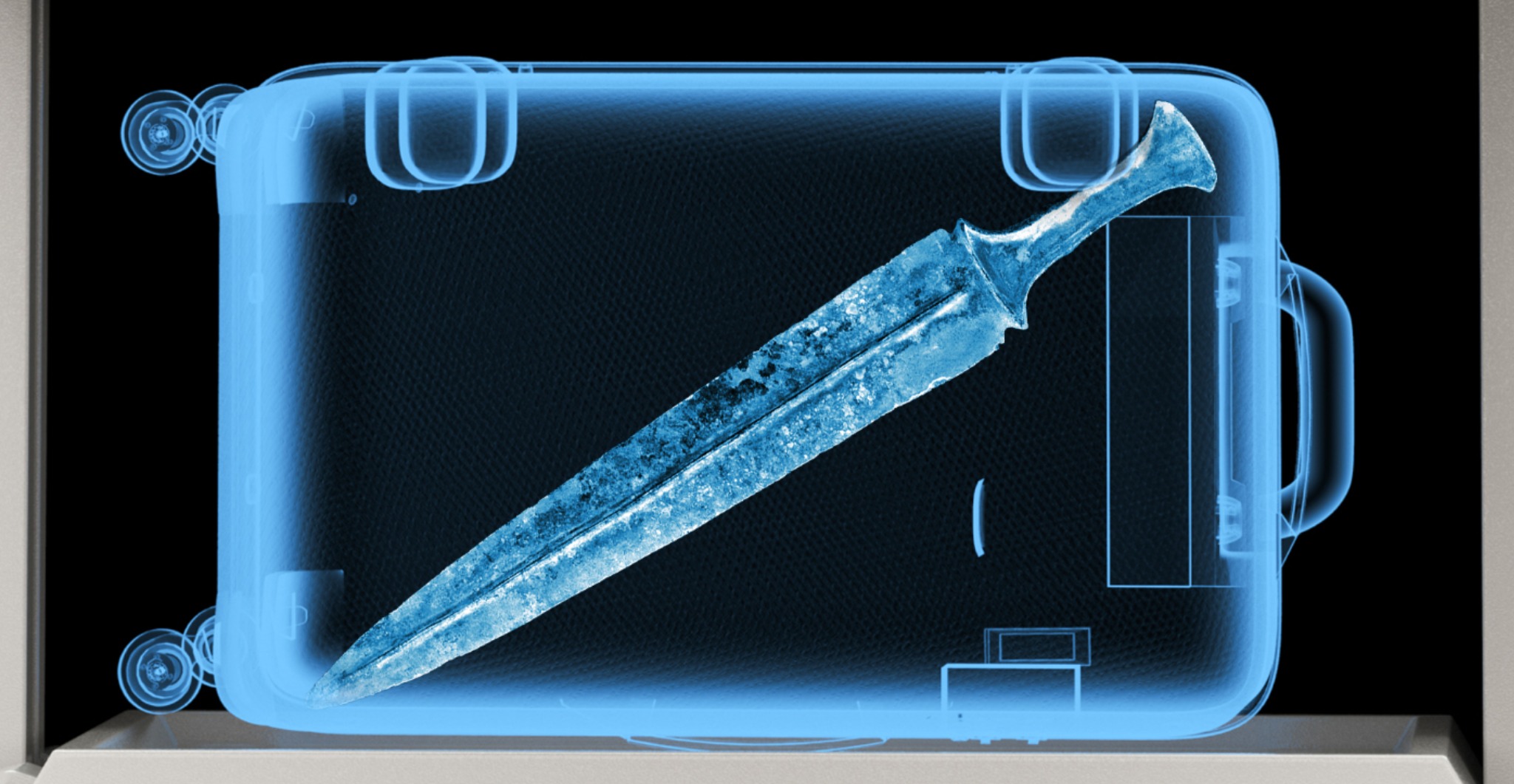A Bronze Age sword has been seized at a customs checkpoint in Poland. But the way in which it was disguised is the what sets this case apart. Whether it’s art or antiquities, all smugglers have one trait in common — cleverness — that they hope to employ well enough to avoid the keen eye of customs officials. Yet in this instance the attempt to fool customs officers by claiming an antique Bronze age sword was a worthless home decoration was haplessly unsuccessful.
There’s no word yet on what’s facing the smugglers who tried to get an ancient, Bronze Age sword out of Kiev, Ukraine and into the Czech Republic by disguising it in pieces as ordinary, inexpensive decorations for their home. It was divided into pieces in order to disguise it and was planned to later reassemble for sale. The sword was identified at the Customs Department in Dębica, in Poland’s south-eastern region of Subcarpathia.
The sender has not been identified yet; the only clue so far is that he (or she) declared the sword worth just 50 Ukrainian Hryvnia, equal to a little more than two dollars in American currency, according to currency transfer website Transfer Wise. In reality, the ancient sword is no doubt priceless, and belongs in a museum.

Border officials called the government’s Office for the Protection of Monuments immediately upon discovering the illicit goods. Unfortunately, the sword was damaged, as its surface is marred and its 50-centimetre length broken into eight pieces. It was immediately given to experts at the National Institute of Heritage for examination, and they are soon to determine the antiquity’s precise age.

However, the Ministry of Science and Higher Education in Poland put out a statement just before Christmas that read, in part: “The golden-brown bronze is covered with a green-blue oxidized layer,” which may affect the item’s value as an archaeological find. Still, the sword belongs in a museum, not in the hands of a private collector, if in fact that is who it was intended for.

The sword dates to the Bronze Age, the historical period spanning roughly around the years 3200-600 BC that was characterized by the use of bronze, following the Stone Age and preceding the Iron Age. According to an initial estimate, the sword in question was forged between the years 2300-700 BC.
Customs officials in Poland have had several cases of smuggling at the Czech border to deal with lately, including some clocks and medals. But antiquities are not the only item on smugglers’ “wish lists” — in 2018, a painting believed to be one by Marc Chagall was intercepted at the border at Hrebenne. According to an article by the Associated Press news website, it was casually sitting beneath a man’s jacket on the back seat of his vehicle, and guards were immediately dubious about his papers claiming the painting was his. Chagall’s paintings go for millions when put up for auction at legitimate galleries.
The Middle East especially has faced an uptick in smuggling. Thieves are continuously trying to get rare antiquities out of countries, and usually go through Turkey, and then into the hands of wealthy private collectors.
From Turkey, smugglers sell these vital national treasures to buyers in Europe and North America, often using the “dark web” to find interested parties. Long gone are the days when smugglers simply mailed ill-gotten goods to prospective buyers. Now, everything from art to antiquities are hidden in things like rolled up carpets or inside piano legs. The techniques used today are infinitely more sophisticated than they were even at the turn of the 21st century.
Related Article: Divers Discover Fully Intact Medieval Sword in Underwater Stone
But for every inventive scheme the black market devises, customs officials develop new ways of unmasking them. Sniffer dogs and specially trained personnel now staff most airports and land crossing borders. Like the individual who tried to get the ancient Bronze Age sword past authorities, smuggling operations often fail, and these nefarious individuals must try to explain to their customer how — and why — the prized goods failed to arrive. It must not be a very comfortable conversation for either party.
